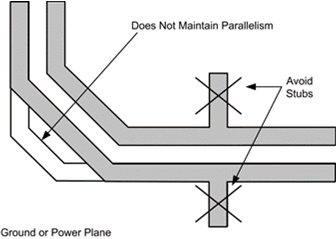ZHCSIS3C September 2018 – April 2024 DP83869HM
PRODUCTION DATA
- 1
- 1 特性
- 2 应用
- 3 说明
- 4 Device Comparison
- 5 Pin Configuration and Functions
- 6 Specifications
-
7 Detailed Description
- 7.1 Overview
- 7.2 Functional Block Diagram
- 7.3
Feature Description
- 7.3.1 WoL (Wake-on-LAN) Packet Detection
- 7.3.2 Start of Frame Detect for IEEE 1588 Time Stamp
- 7.3.3 Clock Output
- 7.3.4 Loopback Mode
- 7.3.5 BIST Configuration
- 7.3.6 Interrupt
- 7.3.7 Power-Saving Modes
- 7.3.8 Mirror Mode
- 7.3.9 Speed Optimization
- 7.3.10 Cable Diagnostics
- 7.3.11 Fast Link Drop
- 7.3.12 Jumbo Frames
- 7.4
Device Functional Modes
- 7.4.1 Copper Ethernet
- 7.4.2 Fiber Ethernet
- 7.4.3 Serial GMII (SGMII)
- 7.4.4 Reduced GMII (RGMII)
- 7.4.5 Media Independent Interface (MII)
- 7.4.6 Bridge Modes
- 7.4.7 Media Convertor Mode
- 7.4.8 Register Configuration for Operational Modes
- 7.4.9 Serial Management Interface
- 7.4.10
Auto-Negotiation
- 7.4.10.1 Speed and Duplex Selection - Priority Resolution
- 7.4.10.2 Master and Slave Resolution
- 7.4.10.3 Pause and Asymmetrical Pause Resolution
- 7.4.10.4 Next Page Support
- 7.4.10.5 Parallel Detection
- 7.4.10.6 Restart Auto-Negotiation
- 7.4.10.7 Enabling Auto-Negotiation Through Software
- 7.4.10.8 Auto-Negotiation Complete Time
- 7.4.10.9 Auto-MDIX Resolution
- 7.5
Programming
- 7.5.1
Strap Configuration
- 7.5.1.1 Straps for PHY Address
- 7.5.1.2 Strap for DP83869HM Functional Mode Selection
- 7.5.1.3 LED Default Configuration Based on Device Mode
- 7.5.1.4 Straps for RGMII/SGMII to Copper
- 7.5.1.5 Straps for RGMII to 1000Base-X
- 7.5.1.6 Straps for RGMII to 100Base-FX
- 7.5.1.7 Straps for Bridge Mode (SGMII-RGMII)
- 7.5.1.8 Straps for 100M Media Convertor
- 7.5.1.9 Straps for 1000M Media Convertor
- 7.5.2 LED Configuration
- 7.5.3 Reset Operation
- 7.5.1
Strap Configuration
- 7.6 Register Maps
- 8 Application and Implementation
- 9 Device and Documentation Support
- 10Revision History
- 11Mechanical, Packaging, and Orderable Information
8.4.1.1 Signal Traces
PCB traces are lossy and long traces can degrade the signal quality. Traces must be kept short as possible. Unless mentioned otherwise, all signal traces should be 50Ω, single-ended impedance. Differential traces should be 50Ω, single-ended and 100Ω differential. Take care that the impedance is constant throughout. Impedance discontinuities cause reflections leading to EMI and signal integrity problems. Stubs must be avoided on all signal traces, especially the differential signal pairs. See Figure 8-10.
Within the differential pairs, the trace lengths must run parallel to each other and matched in length. Matched lengths minimize delay differences, avoiding an increase in common-mode noise and increased EMI.
Length matching is also important on MAC interface. All Transmit signal trace lengths must match to each other and all Receive signal trace lengths must match to each other. When using 1G transmission speeds, the tolerance for length matching is 50 mils. When using 100/10M, the tolerance for length matching is 100 mils.
Ideally, there should be no crossover or via on the signal paths. Vias present impedance discontinuities and should be minimized. Route an entire trace pair on a single layer if possible.
 Figure 8-10 Avoiding Stubs in a Differential Signal Pair
Figure 8-10 Avoiding Stubs in a Differential Signal PairSignals on different layers should not cross each other without at least one return path plane between them.
Coupling between traces is also an important factor. Unwanted coupling can cause cross talk problems. Differential pairs on the other hand, should have a constant coupling distance between them.
For convenience and efficient layout process, start by routing the critical signals first.